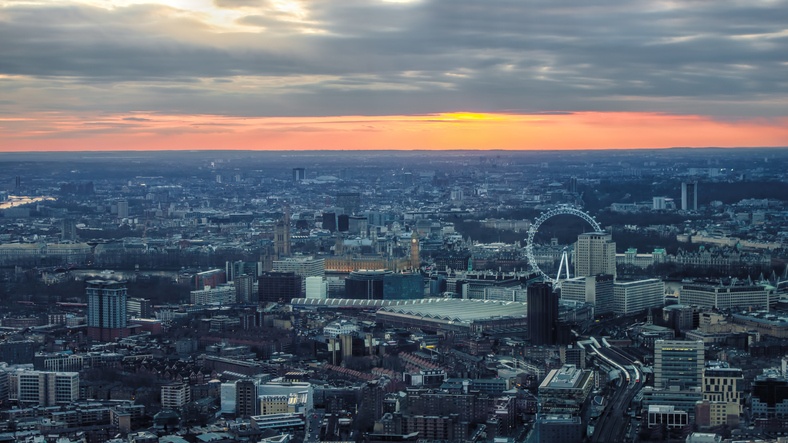Home » Uncategorised »
Annual House Price Growth at Lowest Rate for 5 Years
This article is an external press release originally published on the Landlord News website, which has now been migrated to the Just Landlords blog.

Annual house price growth in October – for which the latest official data is available – was at the lowest rate for over five years, according to the most recent House Price Index from the Office for National Statistics (ONS).
The average house price in the UK rose by 2.7% in the year to October, which is down on September’s rate of 3.0%. This is the lowest annual growth rate since July 2013, when it was 2.3%.
Over the past two years, there has been a slowdown in UK house price growth, driven mainly by a decline in the south and east of England.
During the year to October, the lowest rate of growth was seen in London, where the average house price dropped by 1.7%. This is up, however, from the 1.8% decrease recorded in September.
The average UK house price in October was £231,000. This is £6,000 higher than in the same month of last year.
On a non-seasonally adjusted basis, the average property value in the UK fell by 0.2% between September and October this year, compared with a 0.1% rise during the same period of 2017.
On a seasonally adjusted basis, the average house price in the UK increased by 0.2% between September and October 2018.
By country
House prices in England grew slower than other countries of the UK in the year to October, at an average of 2.4%, which is down slightly on the 2.6% recorded in September. The average property in England is now worth £248,000.
House prices in Wales rose by an average of 3.8% in the 12 months to October, to reach £161,000.
In Scotland, the average property value was up by 4.4% on an annual basis, to stand at £152,000 in October.
The average house price in Northern Ireland currently sits at £135,000, following an increase of 4.8% over the year to the third quarter (Q3) of 2018.
Regionally
Across the English regions, the North West showed the highest annual house price growth in October, at an average of 4.9%. This was followed by Yorkshire and the Humber, at 4.4%.
London had the slowest annual growth of all English regions, at -1.7% in the year to October. House prices in the capital have fallen every month this year since July.
While annual house price growth in London is slowing, it still remains the most expensive place to purchase a home, at an average value of £474,000, followed by the South East and East of England, at £327,000 and £295,000 respectively.

The North East continues to have the lowest average price, at £128,000, and is the only English region yet to surpass its pre-economic downturn peak.
Falling house prices in London are driven primarily by inner London, for which annual growth has been consistently negative since January this year. In the 12 months to October, house prices in outer London fell by an average of 0.2% – its first annual decrease since September 2011.
Both inner and outer London seem to follow similar trends in house price growth, with changes in outer London tending to appear slightly after those in inner London.
The Bank of England’s November inflation report highlights that the slowdown concentrated mainly in the London market since mid-2016 is probably due to the area being disproportionately affected by regulatory and tax changes, and also by lower net migration from the EU.
Comments
John Goodall, the CEO and Co-Founder of buy-to-let specialist Landbay, says: “Amidst a volatile political and economic landscape, the hesitance of buyers and sellers to act is completely understandable. Combine this with the traditional seasonal slowdown, alongside historically low levels of transactions, and stagnant house price growth really is no surprise. As we wait to see how Brexit uncertainty unravels, the private rental sector will play a more important economic role than ever, as it provides flexibility and value to renters and landlords alike.”
Lucy Pendleton, the Founder Director of independent estate agent James Pendleton, also comments: “House price growth is still bouncing around five-year lows, but it’s in London where the market is readying itself for a recovery in transaction numbers early next year.
“First time buyers are eagerly watching a contraction that, once you factor in the effect of inflation, is resulting in starter homes in the capital becoming much more affordable.
“London has posted a solid four months of annual price falls now, which is enough to begin to make a meaningful difference to the value proposition of these homes.
“The North East was the first to follow suit and post negative annual growth, but it won’t be the last. The regions are likely to continue to follow this trajectory as we head into early 2019.
“The fact that a correction in prices is unfolding now in London, where prices are highest and there is most competition, will let some pressure out of the market and inject some much-needed new blood into the volume of sales.”
Chris Sykes, the Mortgage Analyst at Private Finance, gives their thoughts on the capital: “London’s property market in 2018 has been a tale of two cities. While outer London house prices have remained relatively resilient over the course of the year, inner London – a hub for both foreign and domestic investment – has been hit hard. Punitive measures imposed on buy-to-let investors, combined with the prospect of the UK crashing out of the EU, has dissuaded potential property investors. Central London property prices have witnessed consistent decline over the course of the year, now down by 3% annually.
“While the rest of the UK may be enjoying positive growth for now, with the North West witnessing house price growth of nearly 5%, it’s important to remember the wider UK property market often takes its lead from London. With Brexit uncertainty likely to continue well beyond March 29th, UK house prices could be set to weaken nationwide in 2019.
“With property prices acting as an important barometer of strength for the broader UK economy, these figures will be a source of discomfort for some. However, for first time buyers that have long been priced out of the property market, this ongoing uncertainty marks a time of opportunity, as they gain some respite from soaring house prices.”




